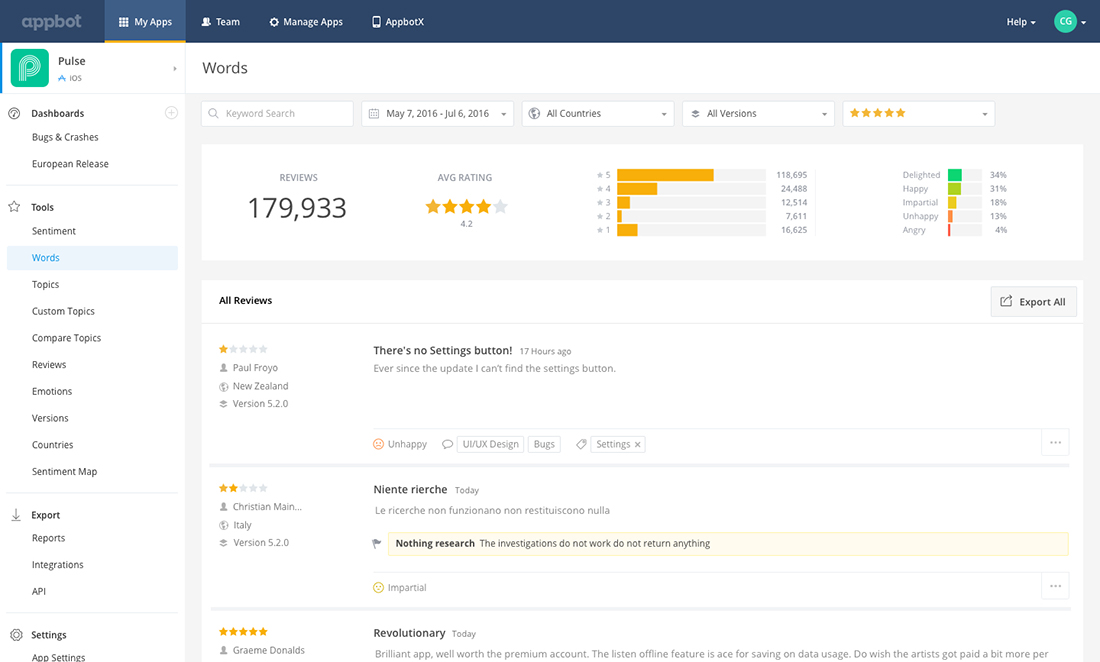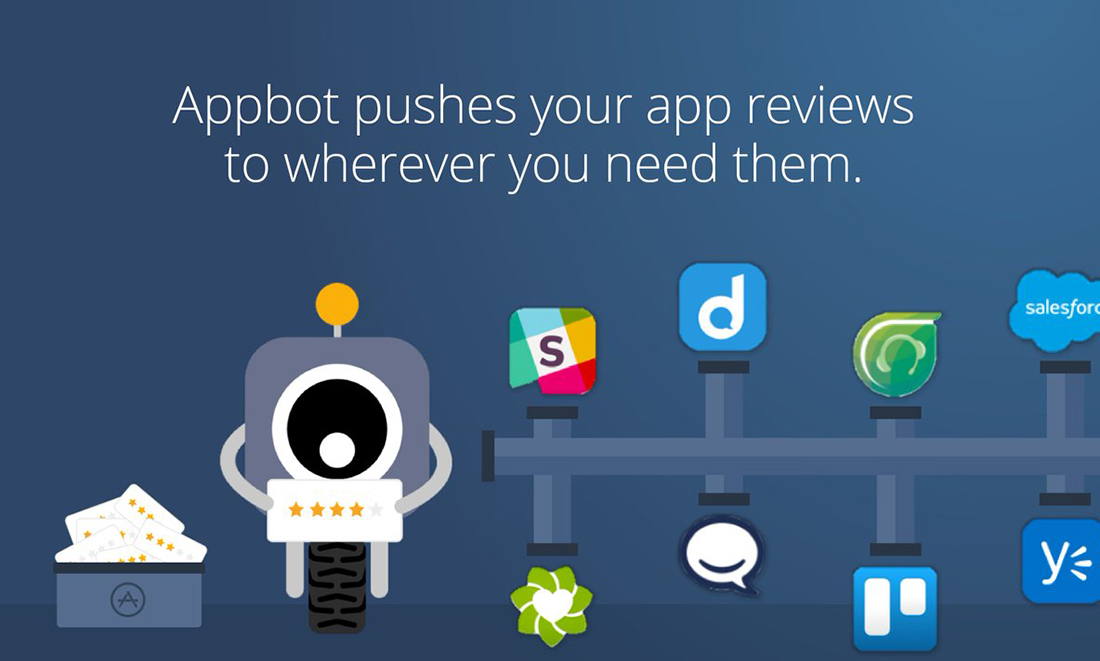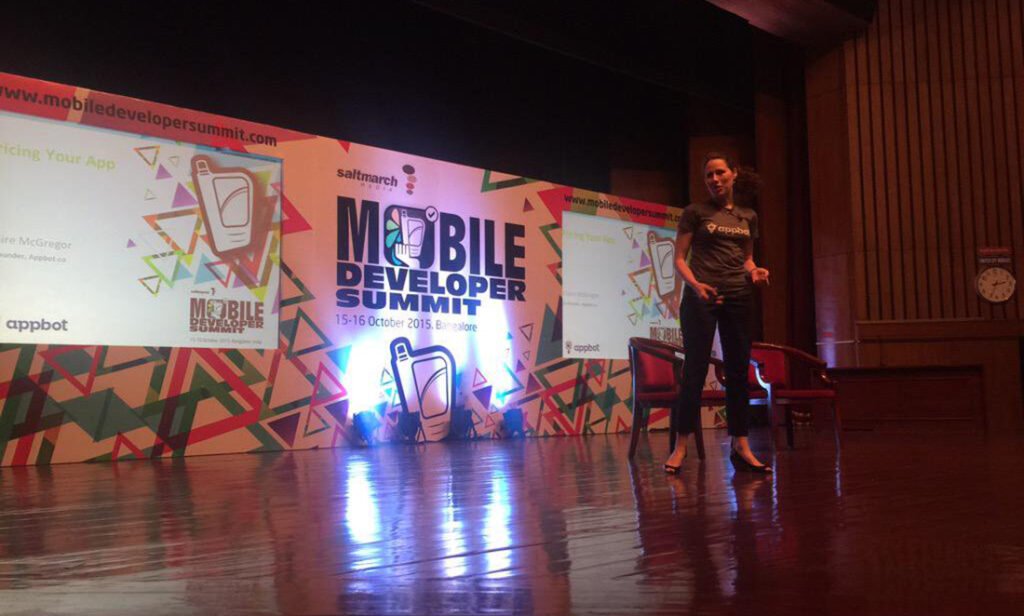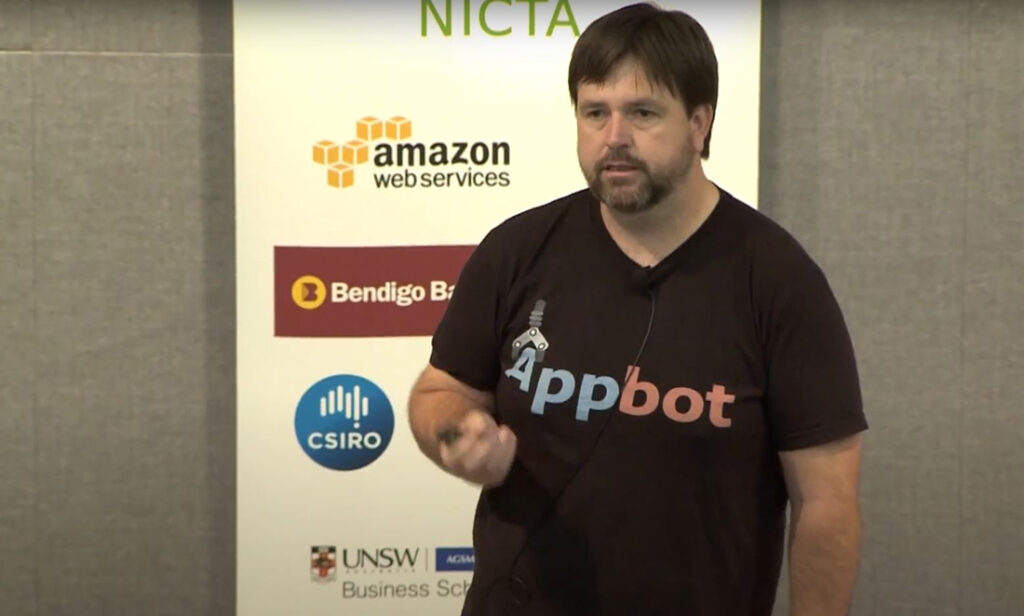Appbot is an app store review and ratings analysis tool that started as a side project 5 years ago.
Since then, it has grown to be used by 35% of top-charting apps globally, including PayPal, Pinterest, Disney, Twitter, BMW and Microsoft.
So what exactly is Appbot?
Imagine you are an app developer (or if you are one, well do we have a relatable story for you!).
You produce an app that everyone just loves. It goes gangbusters. Your app is used by thousands of people worldwide and therefore is distributed through all the various app stores—Apple’s App Store, Google Play, Windows and Amazon.
Through all those channels, your app receives comments, reviews and feedback on a wide range of issues and bugs. Currently, you have to access each of those distribution channels separately to see those reviews and feedback. Each channel has its own way of recording the data, and because your app is used worldwide, you receive multiple reports from each channel as they segment their app stores by region.
That’s where Appbot comes in. It collects the reviews, feedback and comments from all the app stores, converts it to your language and puts it in a neat dashboard to give you real-time reliable data.
Now instead of worrying about gathering data, you can get back to growing your user base using that feedback direct from customers.
The brains behind it all
Co-founders of Appbot Stuart Hall and Claire McGregor come from very different backgrounds.
A vet by trade, Claire joined her first startup—MedicAnimal—in London almost a decade ago. Since returning to Perth, Claire became a leader of the local startup community, where she met experienced computer programmer Stuart Hall.
At the time, Stuart was the lead developer of a music discovery app—Discovr—which became the #1 music app in more than 100 countries and was downloaded over 4 million times.
Recognising the importance of visibility in the top charts and reviews to drive recurring downloads, Stuart built his own tool to provide daily reports on app reviews for Discovr and other apps he had developed and noticed a strong correlation between ratings and downloads.
So, what started as a side project became the foundation for Appbot. Presenting at Tech23, Stuart explained, “To test it all out, we put Appbot into 7 Minute Workout,” which is another of Stuart’s apps.
“The effect was immediate. We saw a 500% increase in the number of reviews and ratings, with consistent 5 star ratings and a 25% increase in revenue.”
When the hardest thing about launching a new app is getting discovered in the first place, Appbot feeds a virtuous loop—feedback leads to 5 star ratings, which lead to more downloads, which lead to more ratings
From little things big things grow
In its first 2 years, Appbot attracted 40,000 users by word of mouth.
Since Claire joined the team in late 2014, they have grown the base to now cover over 35% of top-charting apps globally.
So what makes Appbot so successful?
Stuart: “We have spent the last 3 years iterating and improving Appbot. Now we are a suite of analytical tools to help app developers improve their app faster. We read the app reviews, analyse the sentiment and organise them automatically … Essentially, Appbot replicates the feedback-driven growth model that I use to develop my own apps.”
What is the best thing about building Appbot?
Stuart: “It’s great that we can build a high-tech business from Perth.”
Claire: “Plus we aren’t constrained by the traditional job mindset. Sure, it is still work and we take everything we do seriously, but we get to plot our own path and have a lot of fun doing it.”
What is the hardest thing about building Appbot?
Stuart: “It is not so much product-related, more the journey—riding the entrepreneurial rollercoaster of continuous highs and lows.”
Claire: “Also, it is really important to find the right talent to fit into the team. We have been really lucky to find great people through our networks and have grown to a team of 11 human-bots now.”

Can you tell us more about the team?
Stuart: “On the technical side, we have three more developers—Tris, Ash and Michael—plus our designer Corey. Daniel helps Claire with marketing, and Christie is in charge of customer success, then we’ve got Matt to help with the finances.”
Claire: “We haven’t advertised any of those positions. Everyone who has joined Appbot is either someone Stu or I worked with previously or they were recommended by another member of the team. It just goes to show how important it is to invest in your networks and recruit for fit … Whoever joins the team, we still need to train them to do what we need them to do. What matters most is that they have the right mindset and respond well to feedback. Our whole business is feedback based, from customers and the team itself, so everyone needs to be comfortable with transparency and absolute honesty.”
Stuart: “When it comes to recruiting developers, we don’t put them through a traditional interview process. Instead, we have what we call a half-day throw-away—essentially a challenge to build something in limited time. We are mainly interested in their thought process and how they prioritise more than what they actually build—do they try to do everything badly or one thing well?”
What is coming up for Appbot?
Stuart: “We spent 3 years stubbornly focused on becoming the world leader in app review analysis, but our customers keep telling us they want more. So we have spent 12 months focusing on machine learning and AI, training it to read different data sources so now we can start analysing support tickets, survey results and so on.”
Lessons learned?
Claire: “Patience is a virtue.”
Stuart: “Be prepared for dark moments—most of them are just in your head, things you ultimately have no control over.”
Claire: “Balance in the founder team really helps with that. We have complementary skills and diverse opinions but have noticed that our thoughts converge over time and we can support each other.”
Stuart: “We just have to stay focused and always be guided by customer feedback. Stay open-minded and receptive to that feedback, then you can experiment with new features and ideas, but at the end of the day, we have to trust our intuition.”











